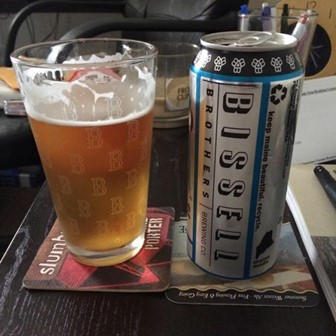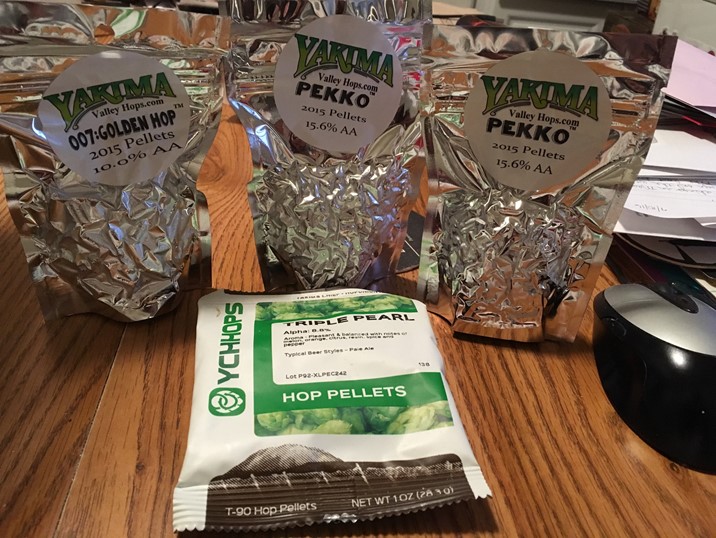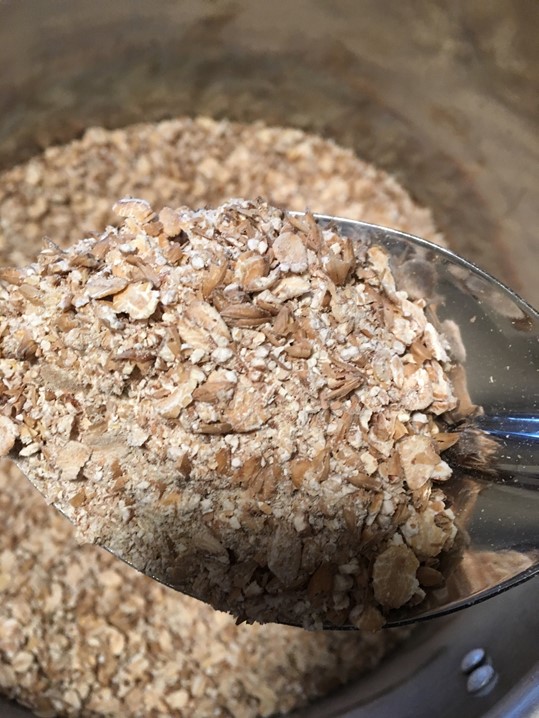The US of IPA is a project where I will brew four regionally inspired American IPAs. I will be pouring all four at the North Shore Brewers tent New England Homebrewers Jamboree. Jamboree is an event open to the public to benefit Make a Wish. Tickets are available here.
With the first three IPAs that I brewed I had a few concepts simple concepts to wrap my head around: New England IPA: hazy appearance, juicy hop flavor, soft mouthfeel; East Coast IPA: balanced with an English influence; West Coast IPA: blonde color and highly aromatic. Leaving the relatively new New England IPA to the side, Midwest IPAs are somewhere in the middle between an East Coast and West Coast IPA. Hoppy, but not the one-dimensional hop bombs you find on the West Coast. They are balanced and malty, but not usually as dark and caramelly as an East Coast IPA. Examples that you can buy in Massachusetts would be Anti Hero IPA by Revolution, Founders Centennial IPA.


Out of all of my IPA recipes, the Midwest IPA was the last to come together. Without a couple of bullet points I knew I needed to hit, I put off designing the recipe. During the Regional American IPA: What’s Up with All the Crystal Malt? seminar, Carrie Knose singled out Modus Hoperandi by Ska Brewing as a beer she always goes back to. I found a clone of Modus and used that as my starting point.

Modus is noticeably darker than most Midwest IPAs which is another reminder that these regional differences aren’t absolutes. There is no Maginot Line that once crossed IPAs become dramatically different. Since I want my beers to be representative of these regional differences, I went about lightening the color of beer. I still used 120L Crystal malt, but I lowered the percentage of the grist. To compensate for the loss in body and head retention from decreasing the crystal malt, I added a small amount of malted wheat. Whereas Broken Fist used Briess 2-row barley, I used Great Western 2-row. I also used some Vienna malt to add a light toasted quality. On brew day I threw in a few ounces of Weyerman Dark Munich malt when I was a couple ounces short of Caramel 120.
Once I had the malt color and flavor where I wanted in my head, it was time to focus on the hops; this is an IPA after all! When looking over the recipes for Broken Fist,
Haze for Daze, and Age of Sail I had a few great IPA hops I hadn’t used yet: Simcoe, Centennial, and Amarillo. Centennial is the single hop used in one of the great Midwest IPAs: Bell’s Two Hearted. Not available in Massachusetts, I always seek out Two Hearted when I am in a state that Bell’s distributes to. When I was struggling for ideas for a Midwest IPA, I thought about brewing a Two Hearted Clone. Needless to say Centennial is perfect for a Midwest IPA.
Simcoe is very sticky and piney. Simcoe is synonymous with West Coast IPAs, Pliny the Ender in particular. I used Simcoe for bittering, and judiciously later on to add complexity while trying to make sure it doesn’t throw off the balance. Amarillo is one of the most popular aroma hops used in IPAs. I added some at flameout, and will have Amarillo make up a plurality of the dry hops. Taking a cue from Carrie’s beer, there will be one dry hop for ten days.
For my yeast I was debating using a more balanced strain like Wyeast 1272, or trying to culture up Bell’s house yeast from Oberon bottle dregs. I went back through the Regional American IPA presentation slides and remembered that Carrie said that while her house strain is Dry English Ale, most brewers in the Midwest use Chico. Having had a bad experience with Dry English Ale fermenting at too high of a temperature, I wasn’t about to try again in the middle of August. Beyond that Chico made sense to me on a couple of levels. It is the most common yeast used in the Midwest; Dale Katechis of Oskar Blues said on Brew Dogs that it is their house strain. At its core Midwest IPA is a middle-of-the-road IPA. If I am going to brew a representative example, using a neutral yeast like Chico makes sense. I also had a free sachet of Mangrove Jack’s M44 (presumably their version of Chico) from Homebrew Con. With all of the brewing I have to do before Jamboree, being able to use a dry yeast means it’s one less yeast starter I have to worry about.

After missing my target volume on my last two three gallon BIAB batches, I adjusted my settings in BeerSmith and was right on the money with my target volume this time. If there is one thing I can take away from this project it has helped me dial in my system through sheer repetition. The only difficulty I had was chilling my wort. When the ground water is warm like it is in the summer there is less of a difference in temperature between the water you are using to chill your beer and the beer itself. I had to let the beer chill overnight before pitching my yeast. I ended up using a swamp cooler when I brewed Haze for Daze.
I almost had enough beer to fill the keg. I did a better job accounting for boil off, but didn’t account for hop absorption. I won’t be able to taste this beer until everyone else does at Jamboree.
Click here for the recipe.
Follow me on Twitter @JChalifour
Like The Would-be Brewmaster on Facebook
Share what beers you are drinking with me on Untappd
View the complete searchable Would-be Brewmaster Archive here.
from WordPress http://ift.tt/2bkZEQl
via
IFTTT






